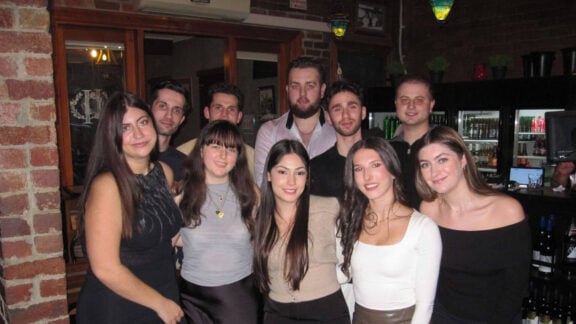It is another hot January 1st. Hundreds are aboard a train bound for a picnic to celebrate the arrival of the New Year. Suddenly a burst of gunfire shatters the festive atmosphere. Police return fire, killing the attackers, but not before four picnickers are dead and seven more wounded.
This is not a fantastic scenario; for several terrifying hours, it was Broken Hill on 1 January 1915.
The recent pronouncements by political extremists citing religious justification for the use of terrorist actions in pursuit of geopolitical goals brings to mind the 1915 Broken Hill Massacre.
The murders in outback New South Wales came only a few weeks after the Sheikh-ul-Islam, the Ottoman Turkish Empire’s primary religious leader, declared jihad (holy war) on behalf of the government, urging his followers to take up arms against Great Britain and the Allies on 14 November 1914.
The sheikh’s declaration of jihad urged Muslims all over the world – including those living in Allied countries – to rise up and defend the Ottoman Empire, as a protector of Islam, against its enemies.
In part, the sheikh’s declaration reads: “Of those who go to the Jihad for the sake of happiness and salvation of the believers in God’s victory, the lot of those who remain alive is felicity, while the rank of those who depart to the next world is martyrdom. In accordance with God’s beautiful promise, those who sacrifice their lives to give life to the truth will have honour in this world, and their latter end is paradise.”
In modern parlance, Broken Hill would be classified as a ‘lone-wolf attack’. The attackers were former Afghan cameleers named Badsha Mohammed Gool, an ice-cream vendor, and Mullah Abdullah, a local imam and halal butcher. While the attack was apparently politically inspired, as the attackers confessed in notes they left behind, it appears they were not involved in any organised group or militia.
A century later, IS calls on Australian Muslims to attack and “kill a disbelieving American or European … or an Australian or a Canadian or any other disbeliever from the disbelievers”. Just as in 1914, religion is being abused for political purposes by groups of extremists. Just as in 1914, Yezidis, Christian Armenians and especially indigenous Christian Assyrians are being targeted in the name of Islam.
Just as it was in 1914, the two thousand year old Christian presence in the Middle East is threatened with extinction, on the eve of the centenary of the Armenian and Assyrian genocides (1915).
A century ago, Christian Hellenes, Armenians and Assyrians were targeted for elimination by the ideological forebears of IS. Once the people were largely gone, their physical heritage was targeted: churches, monasteries, schools, hospitals, community centres, homes. Thousands of Christian holy sites were systematically destroyed across Turkey, Iraq and Syria.
Only a few days ago, IS destroyed the Armenian Church of the Holy Martyrs at Deir-e-Zor in north-eastern Syria, part of their campaign to ‘cleanse’ their ‘Caliphate’ of the presence of ‘unbelievers’.
This is a particularly barbaric act – in a sea of inhumanity unleashed by IS – as the Church of the Holy Martyrs and its associated museum are dedicated to the victims of the Armenian genocide.
The church served as a massive reliquary containing the bones of Christian Armenians deported by the Ottoman Turkish Empire to the desert wastes around Deir-e-Zor to die of hunger, dehydration or worse.
The sands in this corner of war-ravaged Syria contain dozens of mass graves from World War One, the victims of a systematic campaign of extermination by a government against its own citizens.
Just as in 1915, while claiming to be unable to restrain the extremists who hide behind the veil of religion, the Turkish authorities today restrict international efforts to confront IS while permitting IS fighters free access across the borders with Syria and Iraq.
While Ankara refuses NATO use of the 60-year-old Incirlik air base, the Turkish fuel market pumps hundreds of thousands of dollars every day into the coffers of IS through illegal purchases of Iraqi and Syrian petroleum.
In World War One, small groups of specialist forces such as the Dunsterforce rescued tens of thousands of Yezidis, Christian Armenians and indigenous Christian Assyrians, placing themselves between the largely defenceless genocide survivors and those who would wipe them out.
The actions of men such as Stanley Savige (later General Sir Stanley Savige) should be a source of pride for all Australians: individuals standing up for what is right. Australia should draw inspiration from such men in the long fight against extremism that lies ahead.
There have been enough parallels with 1915. Time to break the cycle and save the fragment of Yezidi, Armenian and indigenous Assyrian civilisation that clings to existence in Iraq and Syria today.
*Panayiotis Diamadis is lecturer in Genocide Studies at University of Technology, Sydney.








